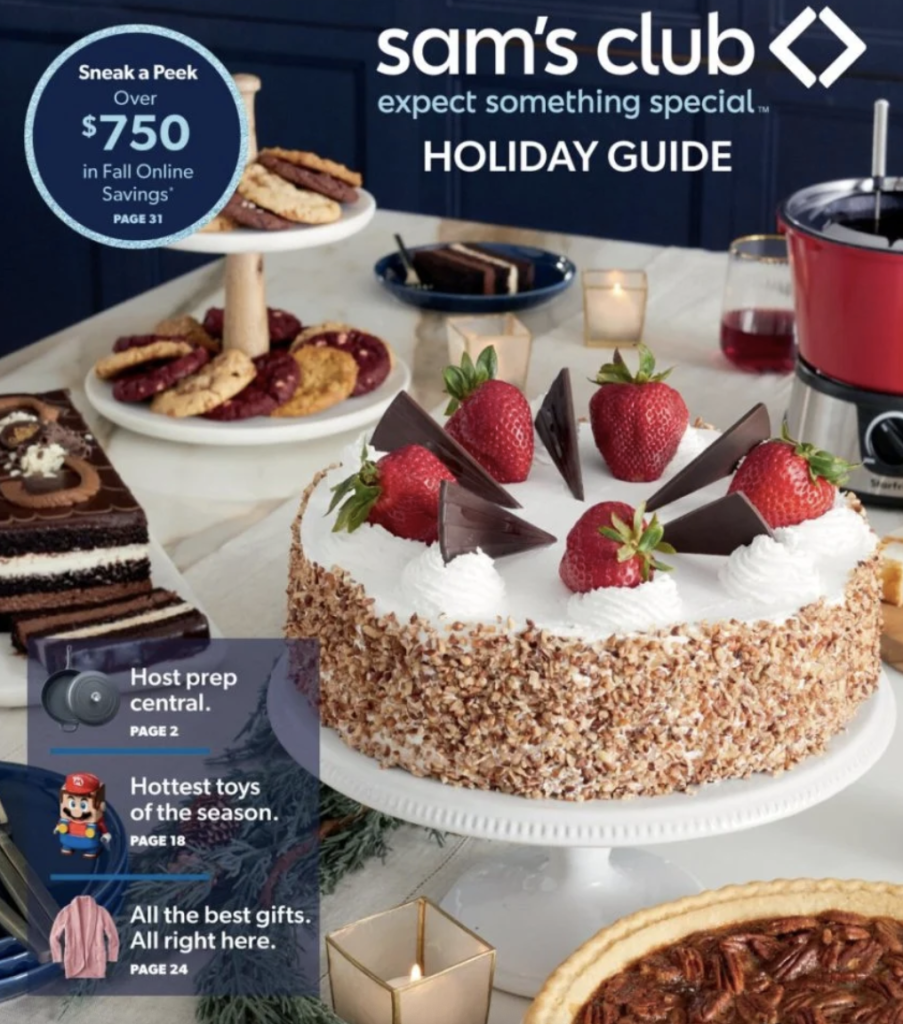Why Catalogues Are Still Winning Christmas Marketing. Everything You Need To Know..
As digital advertising becomes less reliable and more expensive, retailers are turning back to print to win over consumers during peak season. While the holiday season is full of many traditions like spending time with loved

As digital advertising becomes less reliable and more expensive, retailers are turning back to print to win over consumers during peak season.
While the holiday season is full of many traditions like spending time with loved ones, baking sweet treats and decorating, buying gifts is among the most popular, and possibly most important for retailers.
But even as e-commerce adoption accelerates and digital marketing becomes more advanced, retailers are falling back on an old classic to market their goods this season: print catalogues.
Catalogues have a deep history in retail. In fact, the first direct-mail catalogue sent out in the U.S. is said to be Tiffany’s “Blue Book” in 1845. But catalogues sent out around the holidays — like the Sears Christmas Wish Book, first sent out in 1933, or J.C. Penney’s Big Book, first sent out in 1963 — fostered a greater sense of excitement around buying goods for the upcoming season.
While some retailers have moved away from catalogues in recent years, like H&M and Ikea, others have turned to the channel to stand out from the competition, especially during the all-important holiday season.
Walmart and Amazon sent out their catalogues geared toward younger generations with pages filled with the hottest toys. Home brands like Ballard Designs, Grandin Road, RH and Frontgate have issued their own catalogues with holiday decor splayed across their pages to spark decorating inspiration. Lowe’s created its first “toy” catalogue targeting its professional customer base intended to serve as a guide for deals during the holiday season. And Sam’s Club sent out its first-ever holiday catalogue in October.
Catalogues give brands the chance to provide a curated experience, especially during the holiday season when consumers are looking for gifts and ready to spend money.
Concerns around stockouts related to supply chain challenges are making e-commerce more attractive, with the majority of consumers (78.2%) taking to online to buy goods this holiday season, according to an October survey from Coresight Research. And of the $1.3 trillion in sales Deloitte is projecting for this holiday season, $218 billion of that is expected to come from e-commerce.
But shopping online isn’t always conducive to discovery, something consumers are oftentimes after when shopping for gifts.
“The internet largely is an unorganized mess. It serves very well when a consumer knows what they’re looking for, but not as much for general browsing,” said Chad Lusk, senior director at Alvarez & Marsal’s Consumer and Retail Group. “Catalogues serve to assemble these curated collections of goods where you can see multiple items paired together … that effectively triggers ideas.”
Catalogues, in a way, are reminiscent of stores in that they evoke inspiration for customers, but Lusk argues they’re “even better” because some retailers may hold just 20% of their inventory in their physical locations.
“This becomes especially important during the holidays because people have shifted over the course of the year from being what I would call ‘self-oriented buyers’ for themselves, so very purpose-driven, to finding gifts for others,” Lusk said. “There’s joy and emotion and pressure that comes with that — looking for things possibly that other people wouldn’t normally buy for themselves, so they become more inspiration-driven.”
With so many brands operating online now — from traditional retailers to DTC brands — catalogues are also a way for companies to cut through the noise of digital marketing.
“There’s thousands of emails that come in, especially over the holiday. Consumers become numb to it,” Lusk said. “Websites aren’t inherently designed to be as immersive and experiential as catalogs. That’s really what it ultimately delivers: an opportunity to immerse in a brand’s world. You can almost taste the hot chocolate while someone’s sitting under their Pottery Barn blankets staring at their mantelpieces, drinking out of a Pottery Barn mug, whatever it is. It’s an experience and emotional — much different than the typical e-com.”
Turning the page back on print
Print marketing, in general, has fallen back into favour over the last three to five years, experts said. And for good reason.
A print catalogue or direct-mailer has 100% viewability by the target audience, according to Polly Wong, president at Belardi Wong.
“Every single piece makes it into the mailbox, and the consumer has got to touch it to throw it away,” she said.
Wong highlighted that the resurgence of print has also been fueled by concerns around marketing effectiveness, like whether consumers are even opening the emails sent to them or seeing a post on Facebook.
And Facebook, which many brands relied heavily on in recent years, has presented several challenges to brands looking to market on the platform, like high costs and “skyrocketing [cost per thousand impressions],” Wong said. And on top of that, Apple’s recent changes related to privacy and app tracking have made it more difficult to effectively market on Facebook.
“Most of our clients are reporting underperformance in Facebook,” Wong said, adding that the six-hour outage the social media platform experienced last month didn’t help matters. “I think it’s been very eye-opening for marketers. I talk to companies every day who say that they want to diversify their marketing mix and they want to de-invest in Facebook.”
Sudden shifts in consumer spending habits as a result of the pandemic have also complicated brands’ marketing strategies. When the pandemic took hold, many consumers began shopping online more frequently to limit trips to stores in an attempt to stem the spread of the coronavirus.
“As the world has opened up, they one, stopped spending as much time online and two, the Apple iOS changes have really taken down the available pool that Facebook can market to effectively,” said Calla Murphy, vice president of digital strategy and integrated marketing at Belardi Wong. “The whiplash of that just has changed the metrics on digital. It’s just not performing as it once was.”
But among the biggest factors driving retailers to catalogs and other forms of direct-mail marketing is the rising cost of digital advertising.
The cost of digital marketing has been skyrocketing in recent years, with cost per thousand impressions and cost per click this year increasing 40% to 50%, Wong said. “With the rising cost of digital, suddenly direct mail and catalog look more affordable. For example, if retailers are paying $2, $3, $4 costs per click, you can mail four, five, six catalogues for the cost of one click.”
And those costs rise further during peak season: From the third quarter to the fourth quarter, Belardi Wong sees anywhere from a 20% to 40% jump in cost per click and cost per thousand impressions, according to Murphy. “Digital is getting more expensive just because it’s so competitive during that time.”
The fourth quarter is also, by and large, the most important period for retailers and where they make most of their sales. Print marketing, Wong said, has the power to drive customers to stores to make those purchases.
Retailers, including Famous Footwear and J.McLaughlin, two of Belardi Wong’s clients, are leveraging print catalogues as a way to drive foot traffic to their stores, Wong said. “This is peak season. There’s a ton of competition for wallet share. Relying only on email or only on social to get through to your customers and your prospects is risky. Retail stores are very expensive, it’s a huge fixed cost. This is the season when retail stores make all of their money, so basically, marketers want to make sure they drive as many people into the stores as possible.”
By Caroline Jansen for RetailDive
 English
English










